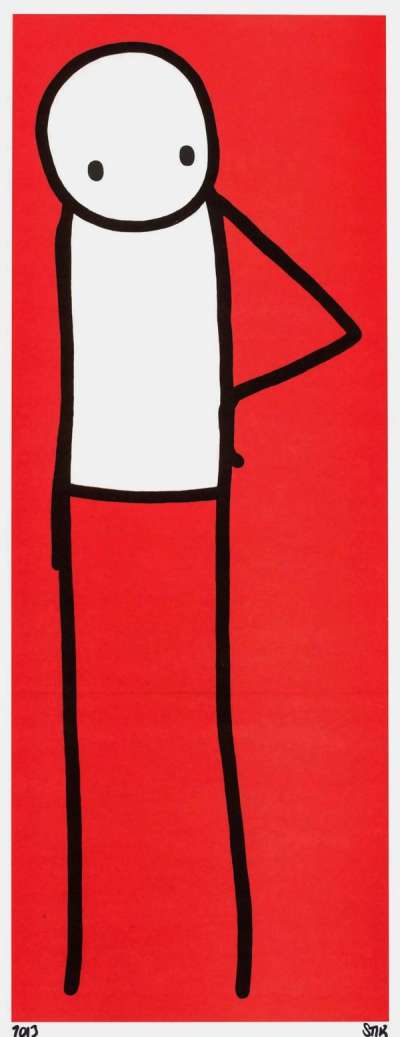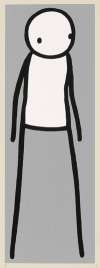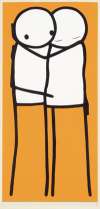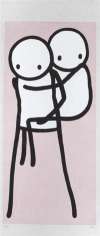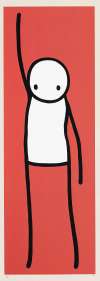Hip
Stik's Hip depicts the artist's familiar stickman motif, standing awkwardly, resting hand on hip, with a characteristic gaze to the side. Despite the image's simplicity the figure's posture emanates a strongly human nervousness; Stik excels yet again in his ability to capture human mannerisms.
Stik Hip For sale
Hip Market value
Auction Results
| Artwork | Auction Date | Auction House | Return to Seller | Hammer Price | Buyer Paid |
|---|---|---|---|---|---|
 Hip (blue) Stik Signed Print | 19 Mar 2025 | Tate Ward Auctions | £680 | £800 | £1,050 |
 Hip (red) Stik Signed Print | 8 Feb 2024 | Forum Auctions London | £935 | £1,100 | £1,400 |
Sell Your Art
with Us
with Us
Join Our Network of Collectors. Buy, Sell and Track Demand
Meaning & Analysis
Stik’s Hip is a series of screen prints depicting the artist’s familiar stickman motif, who stands hand on hip, as if examining something off-frame The print is available in blue and red.
STIK’s figures are, on the one hand, two-dimensional and wooden-looking. At the same time, they suggest fatigue and exertion, with limbs often appearing to wobble. In Hip, the standing figure awkwardly rests a hand on the hip, its gaze characteristically pointed to the side, as if observing action beyond the edges of the print. There is discomfort and nervousness in the figure’s posture; the stickman poses uncomfortably, perhaps taking a moment to regain stability or take a breath. The stickman’s uneasy, wavering stance contrasts with the artist’s bold and certain use of colour and line. In an oeuvre defined by undefined limbs, the clear representation of a flexed wrist is a notable deviation.
STIK’s trademark six-line figure often evokes feelings of tension and strain: the square body and lack of neck give the impression of shoulders raised, compressing the upper body in contrast to the extended limbs. Despite the stickmen’s apparent stillness, STIK has remarked that he is primarily interested in movement: breathing, emoting, unsteady bodies. “They’re not just stickmen, they’re people. People became stickmen. They’re shorthand for emotions. They reflect how I feel. The curve of the back, how tucked in the chest is, if the arse is sticking out, whether they are knock-kneed. There’s a lot in the bend of a knee or the shrug of a shoulder”. This underlying interest in human experience and how it feels to inhabit the body recall Giacometti, the influence of which is plain to see in Hip.
In Giacometti’s Bust of a Seated Man, the contortions of clay across the face and body hint at the body’s exertions, the lips slightly parted as if to suggest speech. They have no defining features, giving way to anonymity. The inherent stillness of the medium brushes up against the subtle evocations of movement and life. Likewise, STIK’s figures are, on the one hand, two-dimensional and wooden-looking, defined by their six-line frame and featureless faces. However, there is always movement beneath the surface, the artist’s lines are never completely straight and the figures’ gaze and uneasiness gesture to action beyond the edges of the print.

